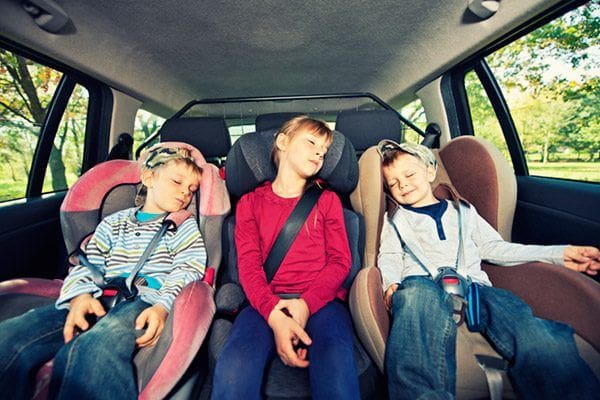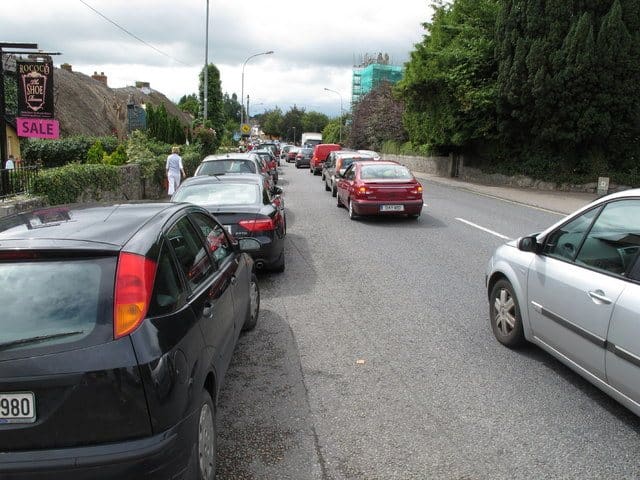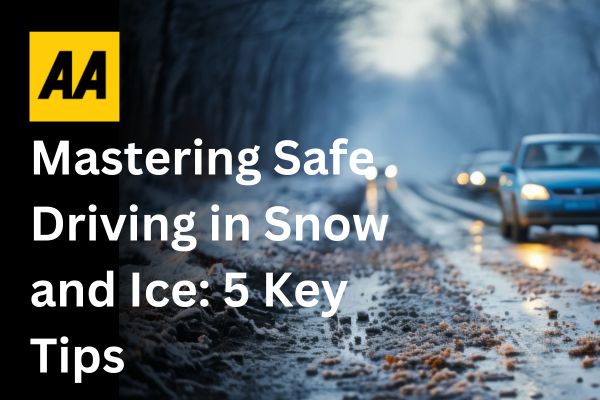16% have travelled with more passengers than seats within last 2 years
As schools start back today, the AA is calling on mums and dads to be disciplined and say no if asked to give a lift home to another child if their car is already full. The message comes after the AA quizzed more than 3,700 people on whether or not they’d travelled in a car that was overcrowded with passengers within the last 2 years.
Thankfully most drivers it seems rigidly adhere to the law these days in this regard with 84% saying they had not done so. Many did however admit that it was something they regularly engaged in in the past. One respondent shared that it was the norm years ago when they were travelling to GAA matches and dances when one was branded a ‘louser’ if they didn’t pack their car.
Back to the present day, of the 16% (just shy of 600 people) to confess that they had travelled with more people than belts or seats, a tiny number, just 20 people said it was something that they regularly do. In most cases the journeys undertaken were short, but a small group, some 83 people had travelled for more than 30 minutes with passengers sitting on each other’s laps.
In 2013, 1 in 5 of the drivers or passengers who lost their lives on Irish roads were not wearing a seat belt.[1] With this the AA reiterates its support of the recent increase of penalty points from 2 to 3 for failure to belt up which is one of the most common offenses detected by Gardaí. It also reminds drivers that the onus is on them to ensure all passengers under the age of 17 are properly restrained.
“Even if a friend is stuck and can’t get to the school gates on time don’t be tempted to stack the kids into the back.” Says Conor Faughnan, Director of Consumer Affairs, AA Ireland. “Not only are you risking the life of the unrestrained child but you’re also endangering all the other passengers. If a crash occurs an unbelted or unrestrained child will literally be catapulted forward smashing into whatever they come into contact with first. It doesn’t bear thinking about and it’s not something anyone would ever want to be responsible for.”
When a crash occurs an unbelted passenger will continue to travel at the same speed the car was travelling at before impact the AA shares. “Take a car travelling at 50 km/ph for example. A typical passenger will be flung forward at 50km/ph with a force of 3.5 tonnes and the heavier the person the more damage they will cause.” Says Faughnan.
The AA also advises its insurance customers that failure to wear a seat belt can have financial consequences too. “If you sustain a serious injury the sad reality is that you may need extensive hospital and rehabilitative care and that can cost an astronomical amount.” Says Faughnan “In the eyes of any insurance provider non wearing of a seatbelt when one is available to you is deemed as contributory negligence. This will inevitably lead to a reduction in payments pertaining to your personal injury claim.”
Notes to the Editor:
- A full summary of Seat Belt and Child Restraint Law can be viewed here.
2. An AA video on how to correctly fit car seats can be viewed at: youtube.com/watch?v=cpIIHQIgP1Q
Fig. 1 How often, if ever, respondents said they’d done the following within the last 2 years (Based on 3,703 responses collected via an AA Online Survey issued on 14/07/14).
| Daily | Regularly | Seldom | Rarely | Never | |
| Driven either as a passenger/driver with too many people in the car (i.e. passengers sitting on each other’s laps etc.) | .19%(7 responses) | 0.35% (13 responses) | 2.35% (87 responses) | 13.04% (483 resps.) | 84.07% (3,113 resps.) |
Fig. 2 Considering the last occasion when you drove somewhere either as a passenger/driver with too many people in the car, roughly how long was the drive?
| % | No. of respondents | |
| Doesn’t apply | 80.53% | 2,849 |
| Less than 5 mins | 6.84% | 242 |
| Between 5 – 10 mins | 6.73% | 238 |
| Between 11 – 30 mins | 3.56% | 126 |
| Between 31 – 60 mins | 1.05% | 37 |
| More than 60 mins | 1.30% | 46 |
[1] www.rsa.ie/en/Utility/News/2014/1-in-5-Drivers-and-Passengers-Not-Wearing-Seatbelt-at-Time-of-Collision/










